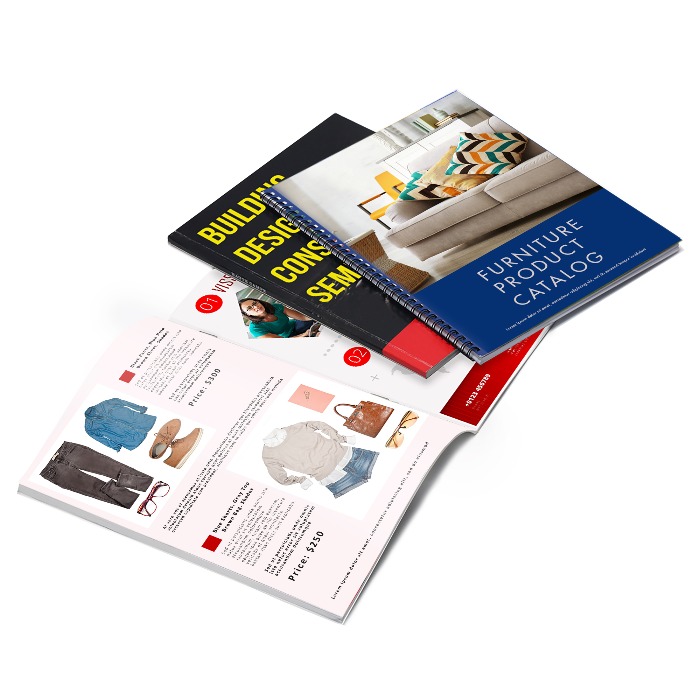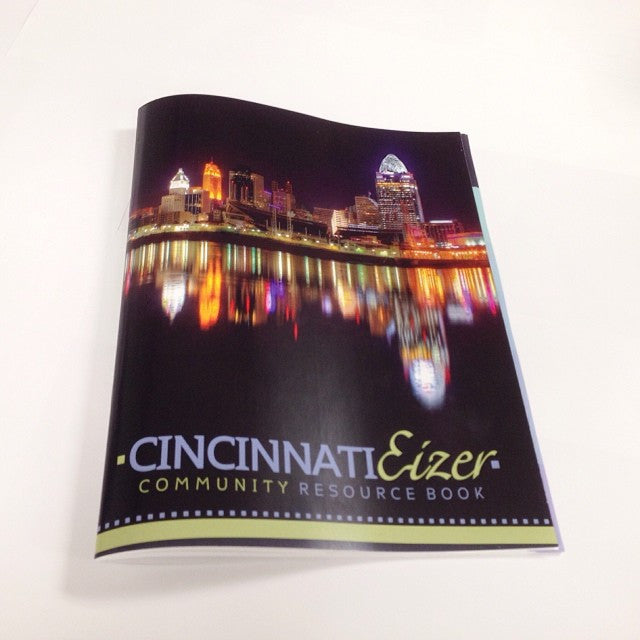Why More Companies Are Turning to Local Booklet Printing Services
Wiki Article
The Vital Overview to Recognizing Brochure Printing Options and Techniques
The process of booklet printing includes multiple considerations that can substantially influence the last product. From picking the appropriate style and dimension to comprehending the nuances of binding approaches, each choice plays a crucial function. In addition, variables such as paper supply and printing techniques additional influence the effectiveness of the brochure. As one navigates these alternatives, it becomes imperative to comprehend exactly how they adjoin and what that suggests for the overall result.Comprehending Pamphlet Layouts and Sizes
When considering brochure printing, understanding the various layouts and dimensions available is essential for achieving the desired discussion. Brochures can be produced in various layouts, consisting of saddle-stitched, spiral-bound, and perfect-bound, each offering distinctive advantages. Typical dimensions vary from common letter (8.5 x 11 inches) to smaller sized choices like A5 (5.8 x 8.3 inches), permitting flexibility based on content and target audience.Selecting the suitable dimension can affect both the layout and reader interaction. Bigger dimensions could fit visually driven material, while smaller formats might be extra mobile and easy to use. Additionally, the variety of pages impacts the option of binding method, as thicker pamphlets may need stronger bindings. Ultimately, understanding these aspects permits a much more tailored technique, guaranteeing that the last item straightens with the designated message and visual, enhancing the overall efficiency of the interaction.Selecting the Right Paper Supply

Binding Approaches: Options and Considerations
When it comes to binding methods for pamphlets, several alternatives are readily available, each with distinctive advantages. Saddle stitch binding uses an affordable option for thinner brochures, while best binding methods supply a more sleek search for thicker magazines. Wire-O binding sticks out for its toughness and simplicity of usage, making it excellent for records that call for flexibility.Saddle Stitch Binding
Saddle stitch binding offers a practical and cost-efficient remedy for setting up brochures, making it a preferred selection among services and publishers. This binding approach includes folding sheets of paper in fifty percent and stapling them along the fold line, creating a neat and well organized appearance. Typically ideal for booklets with a reduced web page count, saddle sewing is ideal for publications, pamphlets, and instructional products. The simpleness of this strategy enables fast manufacturing and is commonly preferred for advertising items or short runs. Nevertheless, it is important to note that saddle stitch binding may not be appropriate for thicker booklets, as the back might not hold up under increased weight. In general, it remains a reliable alternative for lots of printing tasks.Perfect Binding Methods
Perfect binding is a commonly utilized strategy that supplies a polished and specialist surface to brochures and magazines. This method involves gluing the web pages with each other at the back making use of a strong adhesive, permitting a clean side and the capability to hold a bigger number of pages compared to saddle stitching. Perfect binding is specifically suitable for thicker booklets, such as magazines and yearly reports, where a durable, level spine is desired. Additionally, it provides the choice for a published cover that can be designed to boost visual allure. Considerations such as page count, paper weight, and the planned use of the brochure should be taken into account, as they can impact resilience and general high quality.Wire-O Binding Options
Wire-O binding, known for its longevity and versatility, provides an exceptional option for booklets that call for very easy web page transforming and a specialist appearance. This binding method uses a series of metal loops that hold pages securely, enabling them to exist level when open. It is specifically appropriate for catalogs, discussions, and handbooks due to its robust nature. Wire-O binding is offered in various shades and diameters, suiting various page counts and thicknesses. Furthermore, it permits the addition of tabs and covers, boosting the brochure's overall visual. Factors to consider for Wire-O binding consist of the option of wire shade, the dimension of the loopholes, and the extent of customization preferred, every one of which can greatly affect the end product's appearance and performance.Digital vs. Offset Printing: Which Is Best for You?
When picking a printing technique for brochures, comprehending the distinctions between digital and counter printing is essential. Digital printing makes use of modern innovation to generate premium prints quickly and affordably, making it ideal for brief runs or jobs requiring fast turnaround times. It permits for modification, offering the ability to publish on-demand with marginal waste.In comparison, balance out printing is a standard method that masters generating big quantities with regular high quality. It includes moving ink from a plate to a rubber covering, after that to the paper, which causes exact details and lively colors. Nevertheless, counter printing generally calls for longer arrangement times and is more affordable for bigger volumes.Ultimately, the option between digital and offset printing relies on task requirements, budget, and desired quantity. For small, time-sensitive tasks, digital may be the most effective selection, while balanced out may be more suitable for larger, top notch productions.
Designing Your Brochure: Tips and Best Practices
When making a booklet, careful interest to design, typeface choice, and color usage can significantly boost its effectiveness. A well-structured design guides the viewers's eye, while ideal typefaces assure readability and convey the wanted tone. In addition, efficient use shade can evoke emotions and emphasize crucial information, making the general design a lot more impactful.Selecting the Right Format
Just how can one successfully pick the best format for a booklet? It is necessary to review the brochure's purpose and target audience. A tidy, organized design enhances readability and engagement. Using a grid system can assist in aligning components regularly, developing a professional appearance. Furthermore, integrating aesthetic hierarchy with varying dimensions and positionings of images and message can lead the reader's eye and stress key details. It is additionally vital to leave sufficient white space, which prevents congestion and enables far better focus. Testing various formats with mock-ups can give insight right into exactly how the style executes in real-world circumstances, making certain that the final product satisfies both useful and aesthetic demands. Practical Selecting Appropriate Fonts An appropriate typeface can considerably improve the overall style of a pamphlet, enhancing the format and enhancing the content's message. The option of internet fonts need to take into consideration readability, particularly for body message, as it assures the details is accessible to all viewers. Sans-serif fonts are commonly chosen for electronic formats, while serif typefaces can lend a typical feeling in printed materials. It's advisable to limit font options to 2 or three to maintain aesthetic coherence. In addition, font size plays an essential function; headings should be distinctive yet not frustrating, while body message ought to be comfy for analysis. When picking font styles, positioning with the booklet's theme and target market is crucial for effective communication and aesthetic allure.Efficient Use Shade
Shade acts as an effective tool in pamphlet layout, forming assumptions and assisting viewers feelings. It can stimulate sensations of trust fund, peace, or excitement, depending upon the tones chosen. Designers must take into consideration shade concept concepts, making certain that the chosen scheme aligns with the booklet's message and target audience. For example, making use of cozy colors like red and orange can develop seriousness, while cooler tones like environment-friendly and blue foster tranquility.Additionally, comparison plays a vital function; corresponding shades can enhance readability and aesthetic appeal. Consistency in shade usage across web pages even more strengthens brand identification and cohesion. Ultimately, efficient color implementation not only captures focus however also enhances the brochure's objective, making it a necessary element of successful design.
Finishing Touches: Coatings and Unique Results
While several think about the material and format of a booklet the most critical elements, the ending up touches, such as finishings and unique effects, play a vital role in boosting its general allure. Coatings can supply defense and durability, making certain that the pamphlet withstands damage. Matte finishes supply an innovative, non-reflective surface area, while glossy layers can make colors appear even more lively and eye-catching. Unique results, like embossing or aluminum foil stamping, add a tactile dimension that can produce a memorable impact. These techniques can highlight specific locations, drawing attention to essential information or developing visual rate of interest. Furthermore, UV finish can give a high-shine finish that elevates the overall look.Together, these completing touches not only boost the brochure's visual yet likewise connect professionalism and interest to information, inevitably leaving a lasting effect on the reader.Price Considerations for Booklet Printing
Understanding the numerous price considerations for booklet printing is necessary for businesses and organizations aiming to maximize their budget plans. Trick factors affecting prices consist of the option of paper, binding, and ink approaches. Higher top quality products, such as premium paper or specialized inks, generally raise the general expense. Furthermore, the dimension and web page count of the pamphlet play a significant role; bigger pamphlets call for even more resources and time to produce.Another crucial consideration is the printing technique, whether digital or offset, as each has its own prices structure and suitability for various quantities. Organizations must also consider design expenses, which can vary based on intricacy and the use of expert services. Eventually, shipping and handling fees can add to the total, especially for huge her comment is here orders. By evaluating these aspects, companies can make informed choices that align with their financial capabilities while achieving the wanted top quality in their published materials.Frequently Asked Concerns
What Are the Ecological Impacts of Brochure Printing?
The environmental effects of booklet printing include logging from paper production, carbon discharges from transport, and waste generation from disposed of products - Booklet Printing. Sustainable practices, such as utilizing recycled paper and environmentally friendly inks, can alleviate these effectsJust How Can I Ensure Shade Precision in My Pamphlet?
To guarantee shade accuracy in a brochure, one need to make use of calibrated displays, use specialist color profiles, perform examination prints, and pick top notch printing services that offer color matching and proofing options for best results.What Is the Typical Turn-around Time for Booklet Printing?
The typical turnaround time for brochure printing varies depending upon the intricacy and amount - Booklet Printing. Usually, it ranges from a few days to 2 weeks, influenced by elements such as printing techniques and finishing requirementsExist Minimum Order Quantities for Pamphlet Printing?

Can I Print Booklets in Multiple Languages?
Publishing pamphlets in numerous languages is feasible. Several printing solutions provide alternatives for multilingual or multilingual formats, allowing for efficient interaction. Careful planning guarantees that develop components accommodate various languages without endangering readability or appearances. In addition, elements such as paper stock and printing methods additional influence this content the efficiency of the booklet. When considering booklet printing, comprehending the numerous layouts and sizes offered is crucial for accomplishing the wanted presentation. When choosing a printing approach for booklets, comprehending the distinctions in between digital and counter printing is vital. In addition, the dimension and web page count of the booklet play a considerable role; bigger brochures need even more sources and time to produce.Another vital factor to consider is the printing technique, whether digital or countered, as each has its very own pricing framework and suitability for various amounts. The environmental impacts of booklet printing consist of logging from paper manufacturing, carbon exhausts from transport, and waste generation from discarded products.Report this wiki page